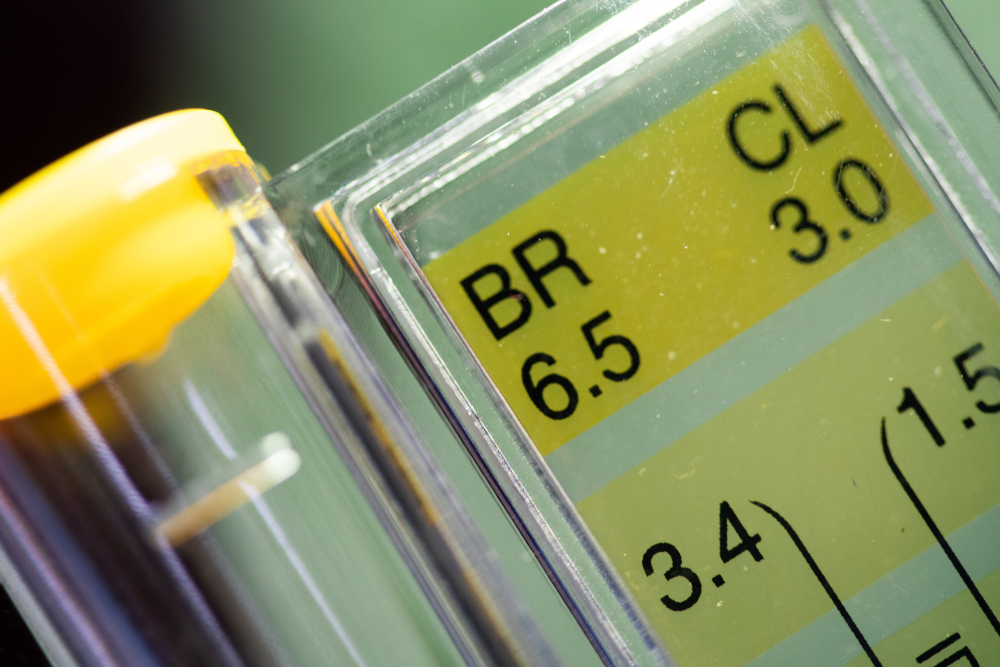For those of us who avoided chemistry in high school, pH levels may be a mystery. pH is a figure which expresses the acidity or alkalinity of a solution on a scale. If you own a pool, you have a basic understanding because those little colored testing sticks tell when your pool water pH is too high or too low. It works the same for lawn care and soil.
A Look At The pH Scale
On the pH scale a 7 is neutral; lower numbers are more acidic and higher values are more alkaline. Pure water is a perfect 7. The pH level apples to all organics: people, water, foods, trees and lawns.
Most lawns thrive at a pH range between 6 and 7, near neutral. Having too low (acidic) or too high (alkaline) levels in your soil can spoil your lawn. Today, we are going to address lawn that is acidic.
 Deciding if your grass is in acidic soil requires you to know what kind of lawn or sod you are growing and the pH of the soil. For instance, St. Augustine grows best in soil that is 5-7 pH and Bermuda prefers 5.8-7 pH. Zoysia is pickier, needing a narrow 6-7 pH. Most groundskeepers aim for a perfect 7, neutral pH, when keeping a lush lawn.
Deciding if your grass is in acidic soil requires you to know what kind of lawn or sod you are growing and the pH of the soil. For instance, St. Augustine grows best in soil that is 5-7 pH and Bermuda prefers 5.8-7 pH. Zoysia is pickier, needing a narrow 6-7 pH. Most groundskeepers aim for a perfect 7, neutral pH, when keeping a lush lawn.
A soil test will provide exact results for you. Check with your local lawncare specialist, garden nursery or agricultural university for a test kit. DIY tests are easy to find online and in stores but be sure to test several areas of your lawn.
The Threat of Low pH and Acidic Soil
One indicator of acidic soil is weeds. Another is thatch. The presence of plantain, shepherds purse, or crabgrass are indicators of acidic soil. Moss is almost a definite indicator of acidity issues in your lawn. The grass itself can become yellow and limp. You may have bare patches or thin areas. If you fertilize and little improvement is shown in these areas, there is a good chance your lawn is acidic.
What causes acidity in your lawn? The causes vary.
Environmental issues that affect pH include:
- Pollution
- Dying leaves and plants
- Compost
- Animal droppings
Too much water can also cause lawn acidity. Overwatering or too much rain will take away important nutrients like calcium, potassium and magnesium, leaving the lawn acidic. The overuse of fertilizers or using the wrong fertilizer can cause a lawn to become too acidic by adding too much nitrogen to the soil.
How to Increase the pH Value of Your Lawn
So, if your lawn is showing signs of low pH, there are some simple fixes. You can raise the pH value of your lawn by spreading crushed agricultural limestone over your lawn. Dolomitic lime is slower but healthier for the roots of the grass. The best time to spread lime is in the fall, but very early spring is just fine too.
This should raise your pH level a whole point, spreading at a rate of 50 lbs. per 1,000 sf of grass. Remember that your landscape areas need a different pH than your lawn, so stay away from trees, bushes and flowering areas.
If you need to raise that pH more than 1 point, consider doing a lime spread in the spring and again in the fall.
Experience True Lawn Recovery with Executive Lawn Care
If you want to speed up lawn recovery, turn to the professionals at Executive Lawn Care. Our methods and experience allow us to keep Dallas’ residential lawns looking glorious throughout the year. Contact us today to schedule a consultation with our team. For a limited time, we are offering your first mow at no charge! Call today.



Recent Comments